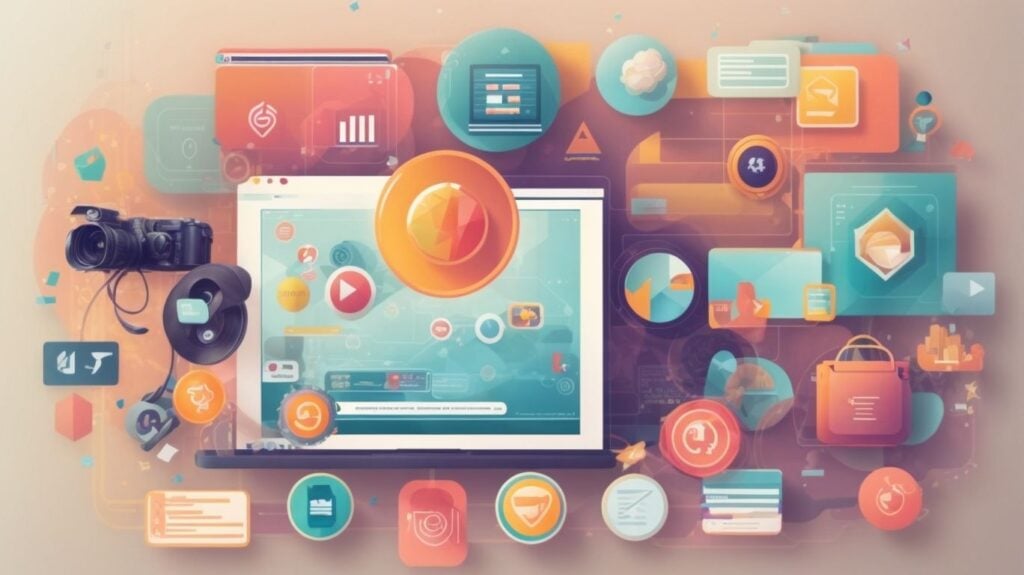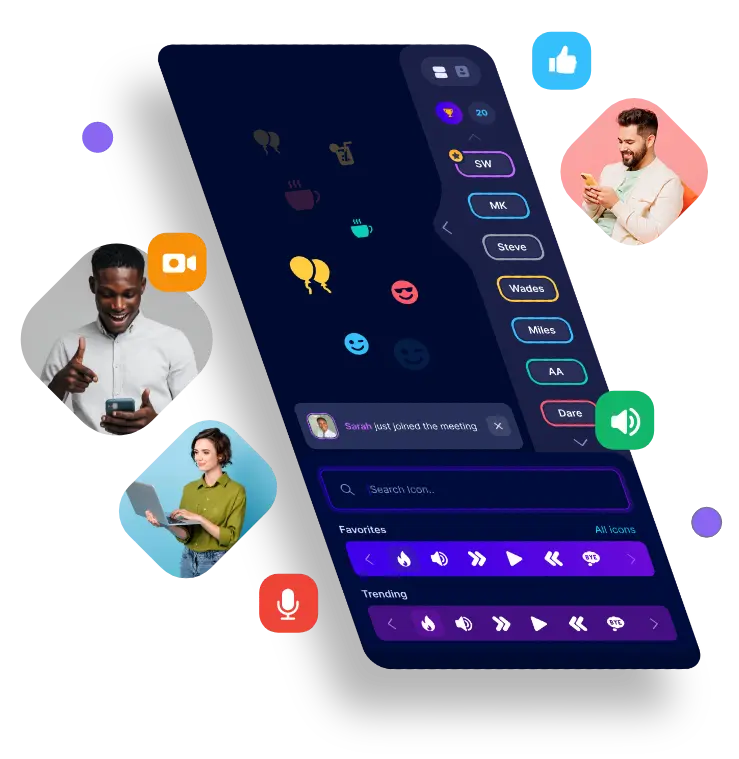
Gamification has become a popular strategy in education, especially in the realm of remote learning. But what exactly is gamification and how does it work?
We explore the elements of gamification, its effectiveness for learning, and how it can be integrated into remote learning. From increasing motivation to providing immediate feedback, gamification offers a range of benefits.
There are also potential challenges to consider. Let's dive in and discover the best practices for implementing gamification in remote learning.
What is Gamification?
Gamification is the integration of game elements and mechanics into non-game contexts to enhance engagement and learning outcomes, particularly relevant in the shift towards online classes during the COVID-19 pandemic.
These game elements can include elements like points, badges, leaderboards, and challenges, which are strategically incorporated into the learning process to motivate students and make the educational experience more interactive and fun. It leverages the psychological principles of achievement, competition, and rewards to keep learners invested in the material being presented.
Importantly, in the realm of instructional design, gamification has become a powerful tool for educators to create dynamic and stimulating online courses. By tapping into students' natural inclination towards competition and achievement, educators can cultivate a more engaging and effective learning environment, ultimately leading to improved retention of information and enhanced academic performance.
What Are the Elements of Gamification?
The elements of gamification include incorporating game mechanics, rewards, challenges, and interactive elements into educational platforms and digital gaming platforms to create engaging and immersive learning experiences.
Game mechanics form the backbone of gamification, providing the rules, systems, and structures that guide user interactions within the educational or gaming context. Examples of game mechanics include points, levels, leaderboards, badges, and progression systems that enhance user engagement.
Reward systems are essential in reinforcing desired behaviors and motivating continued participation. These can take the form of virtual badges, points, unlocking of new levels, or even tangible rewards. Rewards provide instant feedback and a sense of accomplishment to encourage learners.
Challenges are another critical component, offering tasks or activities that require problem-solving, critical thinking, and skill development. These challenges can be scaffolded to cater to different skill levels, ensuring a sense of achievement and growth.
Interactive elements such as quizzes, simulations, puzzles, and collaborative activities deepen user engagement by providing opportunities for hands-on learning and interactive feedback loops. These elements create a dynamic learning environment that encourages exploration and experimentation.
How Does Gamification Work?
Gamification operates by utilizing game mechanics to transform traditional instructional activities into game-based scenarios that enhance engagement, motivation, and knowledge retention among learners.
- Employing elements like points, badges, leaderboards, and progress tracking, gamification aims to incentivize learning and foster a competitive yet cooperative environment where learners are motivated to participate actively.
- By integrating storytelling, feedback systems, and challenges, educational content is presented in an interactive and engaging format, allowing learners to develop a deeper understanding and retain information more effectively.
- Through this immersive approach, learners not only acquire knowledge but also refine problem-solving skills, critical thinking, and decision-making abilities in a fun and engaging context.
Why is Gamification Effective for Learning?
Gamification is effective for learning as it increases student motivation, enhances engagement, promotes active learning, and provides immediate feedback, particularly beneficial in higher education settings for improving learning outcomes.
Utilizing gamification techniques in higher education not only stimulates students' interest but also cultivates a collaborative environment where learners are encouraged to actively participate in the learning process. By incorporating elements of competition, rewards, and challenges, educators can create an interactive learning experience that motivates students to strive for academic excellence.
Feedback provision in gamified learning platforms allows for instant evaluation of student performance, enabling educators to tailor their teaching methods to address individual learning needs and preferences. The interactive nature of gamification fosters a deeper level of engagement, making learning more enjoyable and effective.
Zoom meeting engagement through gamification has been our focus at Townhall, and why we've designed our Zoom engagement-boosting app solution.
Increases Motivation
One key benefit of gamification is its ability to increase student motivation, leading to enhanced learning progress, higher levels of student involvement, and the development of intrinsic motivation toward educational objectives.
By incorporating game elements such as rewards, competition, and progress tracking into the learning process, students are more inclined to actively participate and strive for achievements. The element of challenge presented in gamified activities encourages students to push their boundaries and continuously improve. The immediate feedback provided in gamified tasks reinforces positive behavior and helps students gauge their progress, boosting their confidence and eagerness to learn further.
Enhances Engagement
Gamification enhances engagement through features like collaborative competitions that encourage interaction, real-time feedback mechanisms that provide immediate responses, and interactive learning experiences that captivate learners.
Collaborative competitions involve learners coming together in a team or competing against each other in a friendly environment, fostering a sense of community and teamwork.
Real-time feedback keeps learners engaged by offering instant guidance and recognition, allowing them to track their progress and make necessary adjustments swiftly.
Interactive learning experiences use gamified elements such as quizzes, simulations, and challenges to immerse learners in a dynamic and stimulating educational environment.
Read our case study about learners in a gamified online finance course who engaged 70% more than learners who participated in the traditional version of the course.
Promotes Active Learning
Gamification promotes active learning by integrating formative assessments that encourage continuous improvement, innovative instructional strategies that spark creativity, and blended learning approaches that combine traditional and digital methods seamlessly.
Through the use of gamification, educators can effectively engage learners by embedding game elements into educational activities, making the learning process fun and interactive. This approach not only boosts motivation but also provides instant feedback through real-time assessments, allowing students to track their progress and identify areas for growth.
By incorporating formative assessments within gamified learning environments, students are prompted to actively participate, apply their knowledge, and receive immediate feedback, fostering a culture of continuous learning and improvement. The integration of innovative instructional strategies such as storytelling, simulations, and virtual reality enhances content delivery, encourages critical thinking, and nurtures creativity among learners.
The utilization of blended learning in gamification bridges the gap between conventional teaching methods and modern digital tools. This hybrid approach combines face-to-face interactions with online resources, promoting flexibility, accessibility, and personalized learning experiences for students of diverse learning styles and preferences.
Provides Immediate Feedback
Gamification provides immediate feedback through mechanisms such as weekly assessments that track progress, user-friendly platforms that simplify interaction, and game dynamics that offer engaging feedback loops for learners.
By incorporating elements of points, badges, leaderboards, and instant rewards, gamification transforms the learning experience into a dynamic and interactive journey.
Through weekly assessments, learners can gauge their progress, identify areas for improvement, and stay motivated to achieve their goals.
The user-friendly platforms used in gamification make navigation intuitive, allowing learners to focus more on the content rather than struggling with the technology.
The game dynamics create interactive feedback loops that keep learners engaged, making the learning process more enjoyable and effective.
How Can Gamification Be Integrated into Remote Learning?
Gamification can be integrated into remote learning by utilizing digital badges to recognize achievements, fostering personalized learning experiences, and leveraging technology-driven approaches to create engaging educational environments.
One of the key benefits of utilizing digital badges in remote learning is the ability to provide immediate recognition for students' accomplishments, motivating them to strive for further success. These badges serve as visual representations of achievements, enhancing students' sense of accomplishment and encouraging them to set and achieve new goals.
Read our post on How to Keep Your Remote Team Aligned with Company Goals.
Personalized learning experiences can be further enriched by tailoring educational content and activities based on students' unique preferences, learning styles, and progress levels.
Technology-driven methods, such as interactive learning platforms and virtual reality simulations, can transform the traditional educational landscape by offering dynamic and interactive learning environments. These tools not only make learning more engaging and enjoyable for students but also provide educators with valuable insights into students' progress and areas for improvement.
Use Gamified Learning Platforms
One way to integrate gamification into remote learning is by utilizing gamified learning platforms like Google Classroom and Flipgrid which offer advanced technology facilities, suitable for compliance training and interactive learning experiences.
Google Classroom, a popular web-based platform, allows educators to create and distribute assignments, track student progress, and provide real-time feedback. Its seamless integration with Google Drive enables easy sharing of resources, fostering collaborative learning.
Flipgrid, on the other hand, leverages short video discussions to boost engagement and communication among learners, promoting active participation. Through features like customizable feedback options and virtual grids, Flipgrid enhances interactivity and facilitates peer-to-peer interactions. Both platforms enable teachers to design dynamic lessons and assessments, making the learning process more engaging and effective.
Incorporate Game-Based Activities
Another approach to integrating gamification into remote learning is by incorporating game-based activities that offer immersive experiences and leverage technology-driven learning methodologies, potentially enhanced through techniques like structural equation modeling.
By infusing game-based activities, educators can tap into the engaging nature of games to promote learning in a more interactive and stimulating way. This approach not only makes learning fun but also encourages students to actively participate in their educational journey. Technology-driven learning methodologies allow for personalized learning experiences tailored to individual needs, fostering a more efficient and effective learning process. Utilizing techniques like structural equation modeling can further refine these methodologies, providing insights into the relationships between various factors influencing learning outcomes.
Create Rewards and Dashboards
To enhance engagement in remote learning, creating leaderboards and rewards based on game mechanics can be an effective strategy, applicable to educational programs and potentially optimized through the use of artificial intelligence.
Dashboards, traditionally seen in the gaming world, serve as a visual representation of individuals' progress and achievements, often triggering drive and motivation. By implementing such a system in remote learning, students can track their performance in real time, fostering a sense of accomplishment. Dashboards can be quite powerful as we've seen a FULL letter grade boost (13%) in student performance via dashboards.
Rewards, on the other hand, act as incentives for desired behaviors, encouraging students to actively participate and excel. These could range from virtual badges and certificates to tangible prizes or even bonus points in assessments.
Integrating artificial intelligence into this gamified approach can further enhance personalization and adaptability. AI algorithms can analyze students' performance data to provide tailored challenges, adaptive difficulty levels, and real-time feedback, making the learning experience more dynamic and engaging.
Utilize Virtual Reality and Augmented Reality
Leveraging virtual reality and augmented reality technologies in remote learning can offer global-scale immersive experiences, potentially integrated with tools like Google Forms and innovations from Forward Eye Technologies.
These cutting-edge technologies have revolutionized the way learners engage with educational content, transcending physical barriers and providing an unparalleled level of interactivity.
By incorporating Google Forms into the mix, educators can seamlessly collect feedback, quizzes, and assessments within the immersive learning environments created by virtual reality and augmented reality tools.
Furthermore, Forward Eye Technologies' advancements in eye-tracking and gesture recognition open up new possibilities for enhancing user experiences in virtual classrooms, making learning more intuitive and engaging.
What Are the Best Practices for Implementing Gamification in Remote Learning?
Effective implementation of gamification in remote learning involves understanding learning objectives, selecting appropriate game mechanics, providing clear instructions, and monitoring progress through formative assessments for optimal learning outcomes.
To align with learning objectives, educators should carefully map out how each gamified element connects to the core educational goals, ensuring that the game design enhances rather than distracts from the learning process.
When choosing suitable game mechanics, it is crucial to consider the age group, subject matter, and overall learning environment to create an engaging and relevant experience for learners.
Offering clear instructions within the game structure helps to orient students smoothly and reduces potential confusion, enhancing their focus on the educational content and tasks at hand.
Utilizing formative assessments at different stages of the gamified learning process allows educators to evaluate individual progress, adapt teaching strategies, and provide targeted support where needed.
Understand the Learning Objectives
The initial step in implementing gamification effectively is to understand the learning objectives, ensuring alignment with educational platforms, teaching practices, and tools like Google Slides for content delivery.
By grasping the learning objectives, educators can tailor gamified activities that directly support the curriculum and learning outcomes. This alignment enhances student engagement and motivation by making the educational experience more interactive and enjoyable. When integrating gamification into educational platforms, educators can utilize tools like Google Slides to create interactive presentations, quizzes, and collaborative activities.
These tools not only enhance content delivery but also provide a platform for tracking student progress and participation. Incorporating varied teaching methodologies, such as peer discussion boards or virtual simulations, within gamified learning environments further enriches the overall learning experience and promotes critical thinking skills.
Choose the Right Gamification Elements
Selecting the appropriate gamification elements involves considering intervention periods, blending learning approaches, and optimizing knowledge retention strategies for effective learning experiences.
Intervention periods play a crucial role in gamification as they determine the duration and frequency of engaging activities within the learning process. By strategically timing these interventions, educators can maintain learner interest and motivation levels over an extended period.
Blended learning methodologies combine traditional classroom teaching with digital resources, providing a diverse range of learning opportunities. This approach allows for personalized learning experiences, catering to different learning styles and preferences.
Provide Clear Instructions
Clear and concise instructions play a vital role in successful gamification implementation, leveraging tools from Google Workspace, fostering interactive learning environments, and adapting to the evolving digital landscape.
When implementing gamification, providing clear and concise instructions is like setting the foundation for a sturdy building. Without this crucial first step, the entire structure of the process can crumble. Google Workspace tools offer a range of functionalities that can be effectively harnessed to streamline communication, collaborate seamlessly, and enhance productivity.
In today's fast-paced and ever-changing digital landscape, the need for interactive learning settings has never been more pronounced. Learners thrive in environments where they can actively engage with the material, making the learning experience more dynamic and memorable.
Monitor and Assess Progress
Continuous monitoring and assessment of progress are essential components of successful gamification implementation, reflecting on the natural setting of learning, online course dynamics, and effective teaching practices.
It is through this continuous monitoring that educators and course designers can track the engagement levels, learning outcomes, and overall effectiveness of the gamification strategies in real time. By assessing progress regularly, instructors can identify areas for improvement, adjust the course content or activities accordingly, and provide timely feedback to learners. This iterative process not only enhances student motivation and participation but also ensures that the gamified elements align with the learning objectives and teaching methodologies.
What Are the Potential Challenges of Using Gamification in Remote Learning?
While gamification offers numerous benefits, potential challenges in remote learning include technical issues, limited access to technology, difficulties with adaptation, and resistance to change, necessitating a strategic approach when integrating gamified elements into educational environments.
A key challenge faced in implementing gamification in remote learning environments is the presence of technical issues, such as connectivity problems, software glitches, or compatibility issues between different devices and platforms. These technical hurdles can disrupt the learning process and hinder the effectiveness of gamified activities, leading to frustration among both students and educators.
The limited access to technology for some students poses a significant barrier to fully engaging with gamification tools. Not all students may have reliable internet connections or access to devices required for participation, creating disparities in opportunities for learning and achievement.
Incorporating gamified elements into educational settings may encounter difficulties with adaptation as educators and students navigate unfamiliar digital platforms and interactive tools. Resistance to change is common when introducing new teaching methods, and some individuals may struggle to embrace the gamified approach initially.
Addressing these challenges highlights the importance of strategic planning when integrating gamification into remote learning strategies. Educators must consider factors such as technology readiness, accessibility, training needs, and ongoing support to ensure the successful implementation of gamified elements that enhance the learning experience for all participants.
Technical Issues
Technical challenges such as compatibility issues, system errors, and infrastructure limitations can hinder the effective implementation of gamification in remote learning, necessitating innovative solutions and technological advancements like Google Street View Treks for enhanced learning experiences.
When integrating gamification into educational platforms, one common issue faced is the varying compatibility of different devices and operating systems that students and educators may use. This can lead to a fragmented experience and limit the reach of the gamified content. To tackle this challenge, developers are now focusing on creating web-based solutions that are responsive and can adapt to different screen sizes and device capabilities seamlessly.
Read our post on Evaluating and Implementing Remote Work Tech Solutions.
System errors are another hindrance as they can disrupt the flow of the gamification elements, causing frustration among users. Implementing robust error detection mechanisms powered by artificial intelligence (AI) can proactively identify and address these issues, ensuring a smoother experience for all participants.
Infrastructure limitations, such as slow internet speeds or outdated hardware, can significantly impact the efficacy of gamification in remote learning settings. Leveraging technologies like Google Street View Treks, which offer immersive virtual experiences without requiring high bandwidth, can provide engaging content even in resource-constrained environments.
Limited Access to Technology
Limited access to technology poses a significant challenge in remote learning gamification, affecting blended learning strategies, technology-driven approaches, and platforms like Moodle that require consistent digital access for effective implementation.
When students do not have access to reliable technology, it hinders their ability to fully engage in gamified learning activities. The interactive nature of gamification heavily relies on seamless digital connectivity for real-time feedback, progress tracking, and collaborative tasks. In a blended learning environment, where physical and virtual learning experiences converge, the lack of technological resources can disrupt the continuity of lessons and hinder the efficacy of asynchronous online components.
Difficulties with Adaptation
Difficulties in adapting to gamified remote learning environments may arise from factors like distance learning dynamics, the integration of game quizzes, alignment with sustainable development goals, and the transition to online education models requiring agile adjustments.
One of the major challenges faced in the realm of distance learning intricacies is the need for educators to establish effective communication channels with students who are physically distanced. This poses a hurdle in providing immediate feedback or guidance, creating a sense of disconnection that traditional classrooms usually do not entail.
Incorporating game quizzes into the learning process introduces a layer of complexity in designing engaging yet educational gaming components that align with the core learning objectives. Ensuring that these game elements contribute meaningfully to the educational content without overshadowing the intended learning outcomes is a delicate balance that educators must strike.
Aligning online education approaches with sustainable development goals necessitates a deeper understanding of how digital platforms can be used to promote inclusive and equitable quality education. This requires a thorough examination of the environmental impact of increased digital usage and the implementation of strategies to address potential sustainability issues.
Resistance to Change
Resistance to change can impede the adoption of gamification in remote learning, hindering knowledge retention efforts, limiting exposure to digital gaming platforms, and potentially impacting global-scale implementation and compliance training strategies.
When students resist change in their learning environment, it creates challenges for educators striving to enhance engagement and interaction. In the context of gamification, this resistance may stem from unfamiliarity with the technology, skepticism about its effectiveness, or a preference for traditional teaching methods.
Overcoming this resistance requires clear communication about the benefits of gamification, personalized support for hesitant learners, and gradual integration to acclimate students to the new approach.
Frequently Asked Questions
1. What is gamification and how can it boost remote learning engagement?
Gamification is the use of game elements in non-game contexts, such as education. Incorporating elements like points, levels, and rewards can motivate and engage students in their remote learning experience.
2. How can teachers integrate gamification into their remote learning curriculum?
Teachers can use various tools and techniques such as creating interactive quizzes, incorporating leaderboards, and offering virtual rewards to make the learning experience more engaging and fun for students.
3. Can gamification be used for all subjects and grade levels in remote learning?
Yes, gamification can be applied to any subject and grade level in remote learning. It can be customized to fit the specific needs and goals of each class, making the learning experience more enjoyable for students.
4. Are there any potential drawbacks to integrating gamification in remote learning?
While there are many benefits to using gamification, there are also potential drawbacks such as students becoming too focused on the game aspect and losing sight of the learning objectives. It is important for teachers to strike a balance between fun and educational content.
5. How can gamification improve student motivation and participation in remote learning?
Gamification creates a sense of competition and achievement, which can motivate students to actively participate in their remote learning activities. It also provides instant feedback and recognition, which can boost motivation and self-esteem.
6. Is there any research that supports the effectiveness of gamification in remote learning?
Yes, numerous studies have shown that gamification can enhance student motivation, engagement, and learning outcomes in remote learning. It can also promote a sense of community and collaboration among students.



